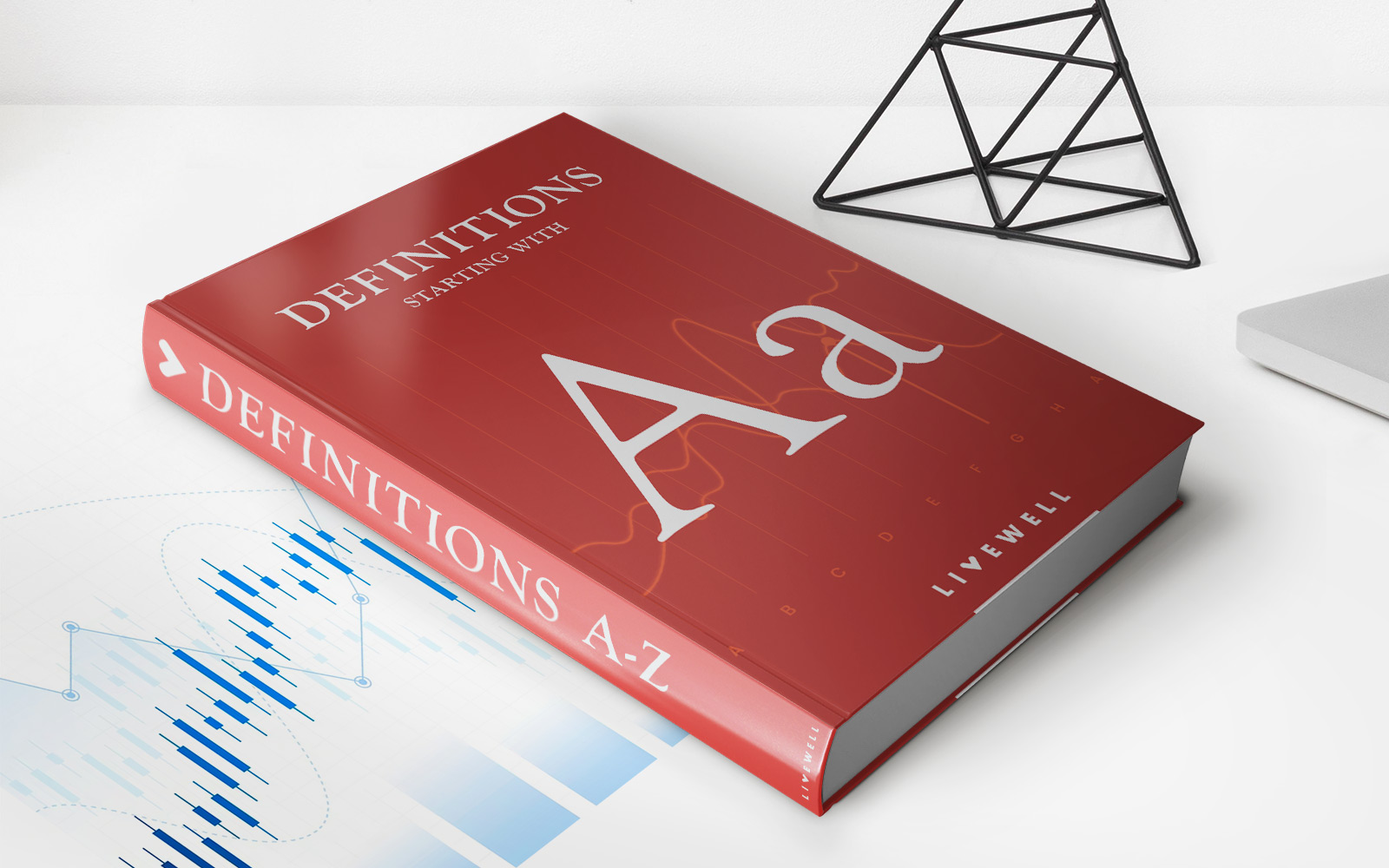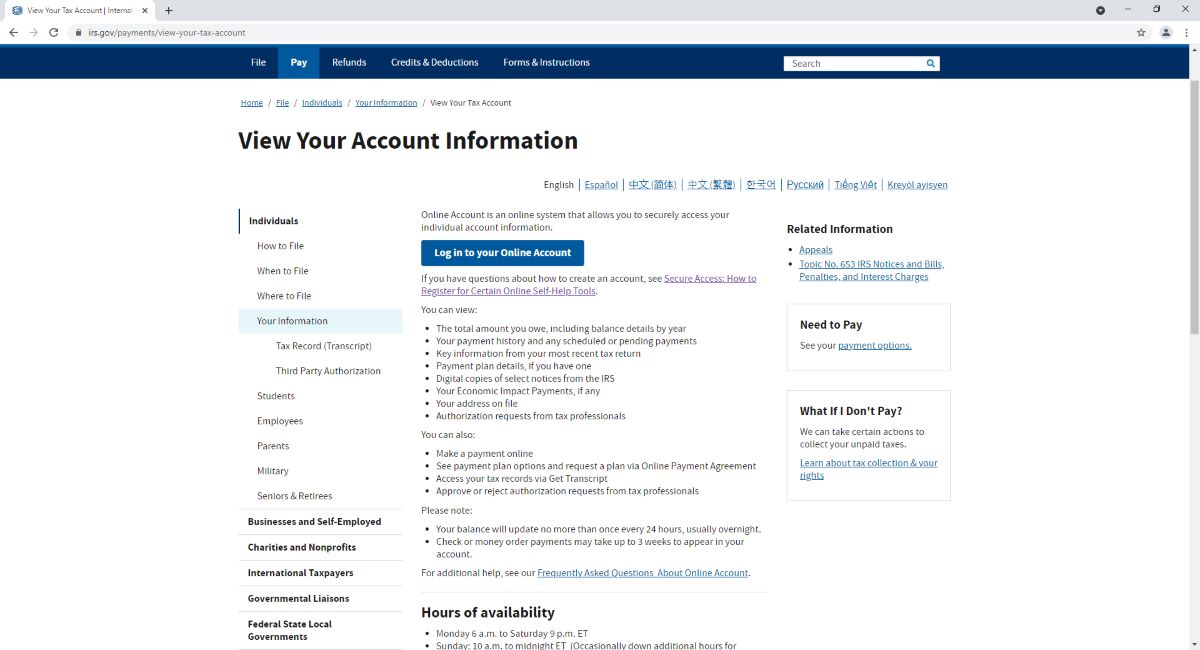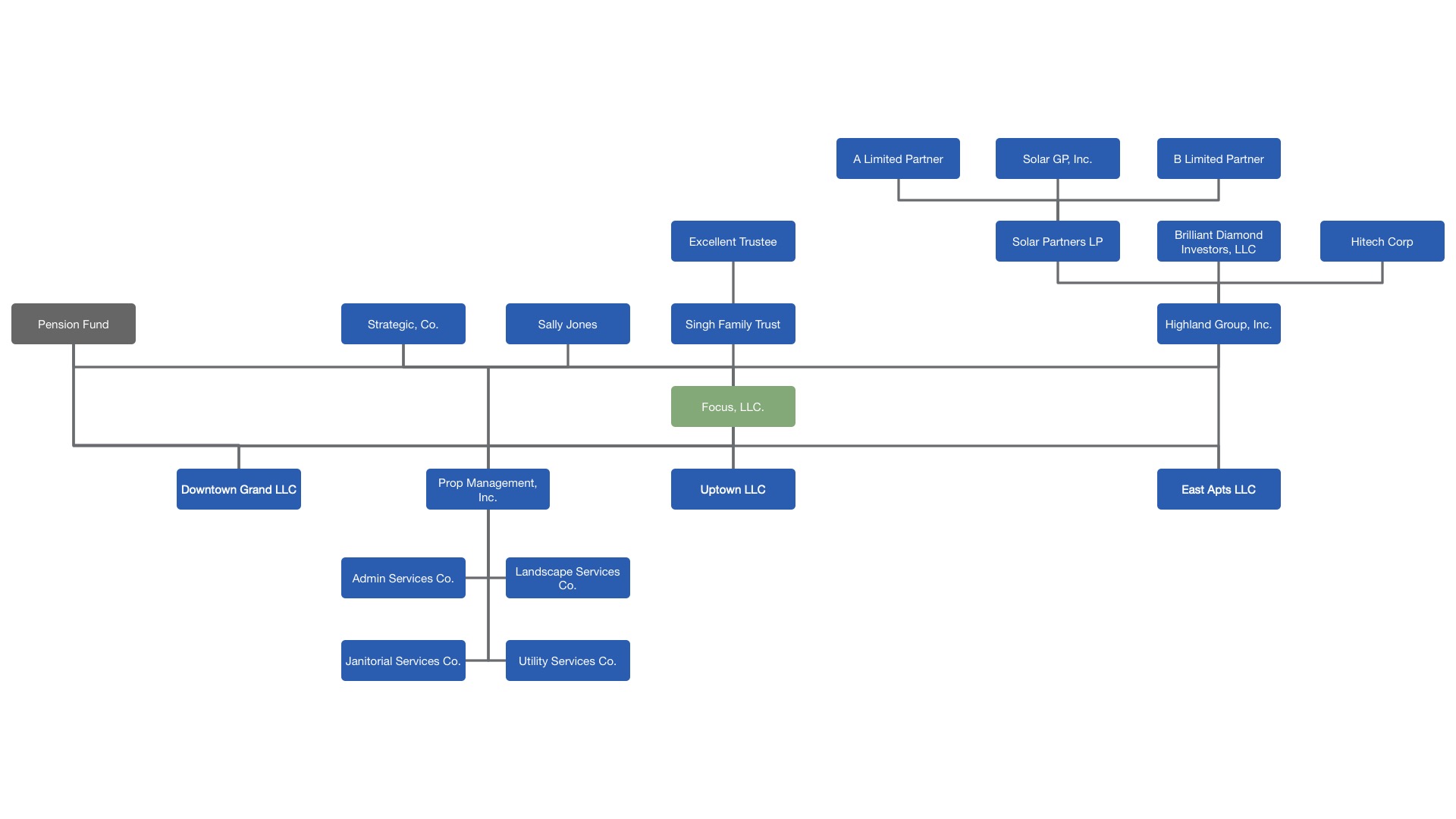

Finance
How To Set Up An Estate Checking Account
Published: October 28, 2023
Learn how to set up an estate checking account and manage your finances effectively. Plan for the future with our expert financial guidance.
(Many of the links in this article redirect to a specific reviewed product. Your purchase of these products through affiliate links helps to generate commission for LiveWell, at no extra cost. Learn more)
Table of Contents
- Introduction
- What is an Estate Checking Account?
- Why Set Up an Estate Checking Account?
- Steps to Set Up an Estate Checking Account
- Choosing the Right Financial Institution
- Gathering Required Documentation
- Opening the Account
- Transferring Funds to the Estate Checking Account
- Managing and Monitoring the Account
- Conclusion
Introduction
When it comes to managing the financial affairs of a deceased individual, having a dedicated and specialized account is essential. This is where an estate checking account comes into play. An estate checking account is a unique type of account that is specifically designed to handle the finances and assets of someone who has passed away.
Setting up an estate checking account can provide numerous benefits for both the deceased individual’s estate and the individuals responsible for managing it. This account serves as a centralized location for depositing and distributing funds, paying bills, and handling other financial matters related to the estate.
In this article, we will explore the ins and outs of setting up an estate checking account. We’ll discuss why it is crucial to have one, the steps involved in the process, and tips for choosing the right financial institution. Whether you are a family member, executor, or administrator of an estate, understanding how to establish and manage an estate checking account will help streamline the financial aspects of handling the estate.
What is an Estate Checking Account?
An estate checking account is a specialized bank account that is specifically used to handle the financial affairs of an individual’s estate after they pass away. When someone passes away, their assets, debts, and financial obligations become part of their estate. An estate checking account serves as a central hub for managing these financial matters.
Unlike a regular checking account, an estate checking account is opened in the name of the deceased individual’s estate, rather than in the name of a specific person. The account is typically managed by the executor or administrator of the estate, who is responsible for making financial transactions and distributing funds according to the deceased individual’s will or applicable laws.
With an estate checking account, various financial activities related to the estate can be conducted, such as depositing incoming funds from sources like insurance payouts, selling assets, or rental income. Additionally, it allows for the payment of ongoing expenses such as mortgage payments, utility bills, outstanding debts, and legal fees.
The primary purpose of an estate checking account is to provide a clear separation between the deceased individual’s personal finances and their estate’s finances. This separation is important for legal and financial reasons. It ensures that the assets and liabilities of the estate are properly accounted for and managed, which is crucial during the probate process.
By having a dedicated account for the estate’s finances, it becomes easier to track income, expenses, and distributions. This level of transparency is crucial for complying with legal requirements, ensuring accurate reporting to beneficiaries, and preventing any confusion or disputes that may arise during the administration of the estate.
Why Set Up an Estate Checking Account?
Setting up an estate checking account offers several important benefits for the management and distribution of the deceased individual’s assets. Here are some key reasons why it is essential to establish an estate checking account:
- Organization and Separation: An estate checking account helps keep the deceased individual’s personal finances separate from the estate’s finances. This clear delineation is crucial for tracking transactions, ensuring accurate accounting, and simplifying the administration process.
- Centralized Financial Management: Having a dedicated account allows for centralized management of the estate’s financial activities. It provides a single location for depositing and distributing funds, making payments, and monitoring expenses related to the estate.
- Legal Compliance: An estate checking account ensures that all financial matters are handled in accordance with legal requirements. It enables proper record-keeping, assists in filing tax returns for the estate, and provides transparency in distributing assets to beneficiaries as specified in the will or as required by law.
- Debt Management: In many cases, an estate may have outstanding debts that need to be settled. By setting up an estate checking account, it becomes easier to track and manage these debts, ensuring that they are paid off in a timely manner and minimizing the potential for confusion or disputes.
- Convenience and Efficiency: An estate checking account simplifies the financial management process for the executor or administrator of the estate. It eliminates the need to mix personal funds with estate funds, and it allows for seamless tracking of income, expenses, and distributions.
Overall, an estate checking account provides a practical and organized approach to handling the financial affairs of a deceased individual’s estate. It streamlines the administrative tasks, ensures legal compliance, and facilitates the smooth transfer of assets to the intended beneficiaries.
Steps to Set Up an Estate Checking Account
Setting up an estate checking account involves several key steps to ensure a smooth and efficient process. By following these steps, you can establish the account and start managing the financial affairs of the deceased individual’s estate effectively:
- Identify the Executor or Administrator: Determine who will be responsible for managing the estate’s financial matters. This is typically the executor named in the deceased individual’s will or the court-appointed administrator.
- Choose the Right Financial Institution: Research and select a reputable financial institution that offers estate checking accounts. Consider factors such as account fees, interest rates, online banking options, and accessibility.
- Gather Required Documentation: Prepare the necessary documents to open the estate checking account. This may include a certified copy of the death certificate, proof of executorship or administration, and any other documentation required by the financial institution.
- Provide Legal Documentation: Submit the required legal documentation to the financial institution, such as letters testamentary, letters of administration, or court orders appointing the executor or administrator.
- Open the Account: Visit the chosen financial institution in person or complete the account opening process online. Provide the required documents, complete the necessary forms, and make an initial deposit into the estate checking account.
- Notify Relevant Parties: Inform relevant parties, such as the deceased individual’s bank, credit card companies, and utility providers, about the existence of the estate checking account. Update them with the new account information for any upcoming transactions or payments.
- Transfer Funds to the Estate Checking Account: Transfer funds from existing bank accounts, investment accounts, or other sources to the estate checking account. This may involve gathering necessary documentation and following specific procedures set by the financial institution.
- Manage and Monitor the Account: Regularly review the account activity, reconcile statements, and keep accurate records of all financial transactions related to the estate. This includes incoming funds, outgoing payments, and any necessary distributions to beneficiaries.
It is important to consult with legal and financial professionals to ensure compliance with local laws and regulations throughout the process of setting up and managing an estate checking account. Their expertise can help navigate any complex or unique situations specific to the estate.
By following these steps and maintaining proper financial management, you can establish an estate checking account that serves as a reliable tool for managing the financial affairs of the deceased individual’s estate.
Choosing the Right Financial Institution
Choosing the right financial institution is a crucial step when setting up an estate checking account. The financial institution you select will play a significant role in managing the estate’s finances, so it’s important to consider several factors before making your decision:
- Reputation and Stability: Look for a financial institution with a solid reputation and a track record of stability. Read reviews, check their financial strength and stability ratings, and consider their longevity in the industry.
- Account Features and Fees: Compare account features and fees among different financial institutions. Consider factors such as monthly service fees, transaction fees, minimum balance requirements, overdraft policies, and the availability of online banking services.
- Accessibility and Convenience: Evaluate the accessibility and convenience of the financial institution. Look for one with a convenient location, or consider online banking options if in-person visits are not feasible. Assess their customer service quality and availability for any questions or concerns you may have.
- Estate Account Expertise: Inquire about the financial institution’s experience and expertise in handling estate accounts. They should have a thorough understanding of the specific requirements and regulations regarding estate checking accounts.
- Additional Services: Consider any additional services offered by the financial institution that may be beneficial for managing the estate’s finances. This could include investment services, financial planning assistance, or beneficiary payout options.
- Account Integration: If the deceased individual had existing accounts with the financial institution, inquire about the possibility of integrating those accounts into the estate checking account. This may facilitate the transfer of funds and streamline financial management.
- Insurance Coverage: Research the financial institution’s insurance coverage for deposits, such as FDIC or NCUA insurance. Ensure that the estate checking account and its funds are protected up to the applicable limits.
Take the time to gather information and compare multiple financial institutions based on these factors. Consider reaching out to estate planning attorneys or financial advisors for recommendations or insights based on their experience working with other estates.
Ultimately, selecting the right financial institution for your estate checking account is crucial for the smooth management of the estate’s finances. Carefully evaluate your options and choose a trusted institution that aligns with your needs and offers the necessary services to effectively handle the financial affairs of the deceased individual’s estate.
Gathering Required Documentation
Before opening an estate checking account, it is important to gather the necessary documentation to ensure a smooth and efficient process. The specific documentation required may vary depending on the financial institution and local regulations, but here are some commonly requested documents:
- Death Certificate: Obtain certified copies of the deceased individual’s death certificate. You may need multiple copies as various entities, such as banks and insurance companies, may require their own copy.
- Executorship/Administration Documents: If you are the appointed executor or administrator of the estate, gather the legal documents that prove your authority. This may include letters testamentary, letters of administration, or court orders appointing you as the personal representative.
- Identification Documents: Gather identification documents for the deceased individual, such as their driver’s license or passport. You may also need to provide your own identification documents as the executor or administrator.
- Tax Identification Number: Obtain an Employer Identification Number (EIN) for the estate from the Internal Revenue Service (IRS). This is typically required by the financial institution to open the estate checking account.
- Will and Trust Documents: If the deceased individual had a will or a trust, gather copies of these documents. They may contain instructions regarding the distribution of assets, which can help with the financial management of the estate.
- Probate Documents: If the estate is going through the probate process, gather any relevant probate documents. This may include a copy of the petition for probate, the court’s order appointing the executor, and the inventory of assets.
- Financial Statements: Collect financial statements or account information for the deceased individual’s existing bank accounts, investment accounts, and other financial assets. This will help facilitate the transfer of funds to the estate checking account.
- Debts and Liabilities: Make a list of the deceased individual’s outstanding debts and liabilities. This may include mortgages, credit card debts, outstanding loans, and utility bills. Having a comprehensive overview of the estate’s financial obligations will aid in managing and paying off these debts.
It is important to note that these are general examples of the documentation you may need. Each financial institution may have its own specific requirements, so it is advisable to contact the institution in advance to confirm the exact documentation needed.
By gathering the required documentation ahead of time, you will be well-prepared to provide the necessary information and complete the application process smoothly when opening an estate checking account.
Opening the Account
Once you have gathered the required documentation, you are ready to open the estate checking account. The process of opening the account typically involves several steps, which may vary slightly depending on the financial institution. Here is a general outline of what to expect when opening an estate checking account:
- Choose the Financial Institution: Based on your research and preferences, select the financial institution where you want to open the estate checking account. Ensure that the institution offers estate checking account services.
- Contact the Financial Institution: Reach out to the chosen financial institution and inform them of your intention to open an estate checking account. Inquire about their specific requirements and procedures for account opening.
- Prepare the Documentation: Ensure that you have all the necessary documentation ready, including the death certificate, executorship/administration documents, identification documents, tax identification number, and any additional documents as required by the financial institution.
- Schedule an Appointment: If required, schedule an appointment with the financial institution to open the estate checking account. Alternatively, some institutions may allow you to complete the process online or through mail, depending on their policies.
- Visit the Financial Institution: If an in-person appointment is necessary, go to the financial institution at the scheduled time. Bring all the required documentation, identification, and any initial deposit required by the institution.
- Meet with a Bank Representative: During the appointment, you will meet with a bank representative who will guide you through the account opening process. They will verify your documentation, review account terms and conditions, and answer any questions you may have.
- Complete the Application: Fill out the necessary account opening forms provided by the financial institution. Provide accurate information, including the name of the estate, your contact information, and any additional details required.
- Make the Initial Deposit: If there is an initial deposit requirement, provide the funds to open the estate checking account. This amount varies depending on the institution, so ensure you are aware of the minimum deposit required.
- Receive Account Information: Once all the necessary steps are complete, the bank representative will provide you with the account details, such as the account number, routing number, and any other relevant information required to access and manage the estate checking account.
Remember to keep copies of all the documentation provided and obtained during the account opening process for your records.
It is advisable to consult with the financial institution and seek guidance from legal professionals experienced in estate matters to ensure that you follow the correct procedures and comply with all legal and regulatory requirements when opening an estate checking account.
Transferring Funds to the Estate Checking Account
Once the estate checking account is open, the next step is to transfer funds from existing accounts or sources to the newly established account. This process involves several key considerations and steps to ensure a seamless transfer:
- Identify Existing Financial Accounts: Compile a list of the deceased individual’s existing financial accounts, such as bank accounts, investment accounts, retirement accounts, and insurance policies. Ensure you have access to the necessary documentation and account details.
- Notify Financial Institutions: Contact each financial institution holding the deceased individual’s accounts and inform them about the passing. Provide them with the necessary information, such as the death certificate and any required forms they may need to transfer the funds.
- Follow Transfer Procedures: Comply with the transfer procedures outlined by each financial institution. They may require specific documentation, such as an account closure letter or their own transfer forms.
- Consult with Professionals: Seek guidance from legal and financial professionals to navigate any complex transfers, especially for accounts with beneficiary designations or joint ownership. They can provide advice on the most appropriate transfer methods based on the estate’s specific situation.
- Keep Accurate Records: Maintain detailed records of all transfers, including the date, the account from which the funds were transferred, and the amount transferred. These records are essential for accurate accounting and reporting.
- Monitor Incoming Funds: Regularly check the estate checking account for incoming funds and ensure they are properly deposited. Review bank statements and reconcile them with your records to ensure accuracy.
- Address Any Issues or Discrepancies: If you encounter any issues or discrepancies during the fund transfer process, promptly contact the respective financial institution for resolution. Keep documentation of any communication or correspondence related to these matters.
- Update Recurring Transactions: If the deceased individual had any recurring transactions, such as automatic bill payments or deposits, make sure to update the account information with the new estate checking account details. This ensures a smooth transition without interruption.
- Notify Relevant Parties: Inform any relevant parties, such as creditors, service providers, or other individuals involved in financial transactions with the deceased individual, about the new estate checking account. Provide them with the necessary information so they can update their records accordingly.
Remember, the process of transferring funds may take time, especially with various financial institutions involved. Patience and thoroughness are crucial to ensuring a successful transfer to the estate checking account.
Consulting with legal and financial professionals throughout the transfer process is highly recommended to address any unique circumstances, comply with legal requirements, and resolve any complex situations that may arise.
Managing and Monitoring the Account
Once the estate checking account is set up and the funds have been transferred, it is important to actively manage and monitor the account to ensure the estate’s financial affairs are properly handled. Here are some key considerations for effectively managing and monitoring the estate checking account:
- Record Keeping: Maintain meticulous records of all financial transactions related to the estate. Keep track of deposits, withdrawals, and any other account activity. This includes recording the purpose of each transaction and the dates they occur. Detailed records will facilitate accurate reporting and documentation of the estate’s financial activities.
- Reconcile Statements: Regularly review bank statements for the estate checking account and reconcile them with your own records. This ensures that all transactions are accurately reflected, and any discrepancies can be promptly addressed.
- Billing and Payments: Use the estate checking account to pay ongoing expenses and bills related to the estate. This may include mortgage payments, utility bills, insurance premiums, outstanding debts, and legal fees. Set up a system to track due dates, schedule payments, and ensure timely payments are made.
- Asset Sales and Income: If the estate involves the sale of assets or generates income, deposit the proceeds into the estate checking account. This may include real estate sales, vehicle sales, rental income, or other sources of revenue. Ensure that all income is properly recorded and reported for tax purposes.
- Distributions to Beneficiaries: If the estate plan or legal requirements dictate, distribute funds from the estate checking account to the intended beneficiaries. Keep a log of all distributions, including the names of beneficiaries, the amount distributed, and the date of distribution.
- Regular Account Reviews: Periodically review the estate checking account and assess the financial situation of the estate. Evaluate any changes in account balances, investment performance, or outstanding obligations. This will help you make informed decisions about the estate’s finances and address any emerging issues promptly.
- Tax Considerations: Consult with a tax professional to understand the tax obligations of the estate and ensure compliance with tax laws and regulations. File any necessary tax returns for the estate, such as income tax returns or estate tax returns, by the required deadlines.
- Consult with Professionals: Seek guidance from estate planning attorneys or financial advisors throughout the management process. They can provide valuable insights, navigate complex financial matters, and ensure compliance with legal requirements specific to the estate.
- Regular Communication: Keep open lines of communication with beneficiaries, legal professionals, and other stakeholders involved in the estate. Provide regular updates on the status of the estate’s finances and address any questions or concerns they may have.
By actively managing and regularly monitoring the estate checking account, you can ensure that the estate’s financial affairs are handled appropriately and in accordance with legal requirements. This organization and oversight will help protect the assets of the estate and foster transparency during the administration process.
Remember, consulting with professionals and seeking expert advice throughout the management and monitoring process is highly recommended. They can provide tailored guidance based on the specific circumstances of the estate and ensure that all necessary steps are taken to effectively manage the estate’s finances.
Conclusion
Setting up an estate checking account is a crucial step in effectively managing the financial affairs of a deceased individual’s estate. This specialized account provides a centralized and organized approach to handle the estate’s funds, pay bills, manage debts, and distribute assets to beneficiaries. By following the necessary steps and considerations outlined in this article, you can ensure a smooth and efficient process.
An estate checking account offers numerous benefits, including clear separation between personal and estate finances, centralized financial management, legal compliance, and convenient access to funds. It allows for transparency, tracking, and accurate reporting during the probate process and delivers peace of mind to the executor or administrator responsible for managing the estate’s finances.
When establishing an estate checking account, it is crucial to choose the right financial institution that meets your needs and offers the necessary services. Gathering the required documentation, opening the account, transferring funds, and managing the account with diligence and attention to detail are vital steps in the process.
Throughout the entire estate checking account journey, it is important to consult legal and financial professionals who can provide guidance tailored to the specific circumstances of the estate. They can offer legal insight, navigate complex matters, and provide support in complying with regulations and procedures.
By effectively managing and monitoring the estate checking account, you can ensure accurate record-keeping, timely payments, successful fund transfers, and proper distribution of assets to beneficiaries. Regular communication and keeping stakeholders informed contribute to a smooth administration process and provide clarity to those involved in the estate.
In conclusion, by understanding the importance of an estate checking account and following the steps and considerations outlined in this article, you can establish and manage an account that serves as a valuable tool in handling the financial affairs of a deceased individual’s estate.














